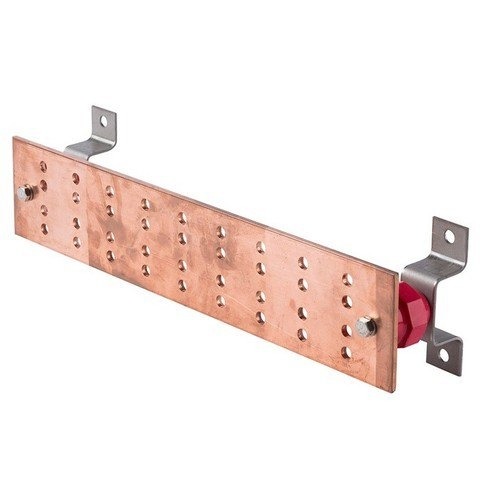Tin plating is a common coating applied to a large variety of copper products including busbars, electrical terminals, battery connectors or any other copper component used in the passing of current. With the electrification vehicles, power equipment and interconnectivity of the internet of things, the need for conductive coatings such as tin plating is growing due to its low cost, conductive and solderability properties.
One of the most common uses of tin is for copper plating of bus bars used in transferring electrical power. This article focuses on the application of tin plating on copper busbars and what you need to know when specifying tin plating. In addition, the various properties of tin plating are covered as well as how those properties are affected by bright, matte or even tin/lead alloy plating of tin.

Copper bus bars are used to distribute high amounts of current and used for mounting components and dissipating heat in various electrical and electronic applications. The main purpose of a busbar is to carry electricity and distribute it. Typically, C110 copper – a general purpose copper per ASTM B152 – is used in bus bar applications due to it having a very high conductivity and offering excellent formability. These properties make this copper grade a cost-effective choice for electronics, power equipment and automotive applications.
Copper Busbars are plated with bright or matte tin to further enhance the corrosion protection, electrical conductivity and solderability of the copper bus bar. Tin has many favorable properties including excellent conductivity, solderability, corrosion protection and it provides an optimal surface for electrical and heat transfer. Unlike raw copper bus, the tin coating provides a soft and ductile barrier which does not easily oxidize when exposed to oxygen or other elements. A raw copper bus will oxidize and lose conductivity very rapidly as compared to a tin coating. Although tin will eventually lose some conductivity tin forms a relatively thin oxide is still reasonably conductive.
Busbars can be used in a wide variety of applications. When specifying a tin coating for a busbar application, there are a few key characteristics to consider. tin plated copper busbarThere are several types of tin that can be used to plate copper busbars, including:
Electrolytic Bright Tin: Bright tin should be specified for copper bus bars or contacts that require improved electrical conductivity, corrosion protection and lubricity. Bright tin is a lustrous deposit that offers improved cosmetic appeal as well as these improved functional characteristics. However, bright tin should not be used in soldering applications as the brightener systems used to create the bright deposit will co-deposited organic elements into the tin deposit. These organic brighteners can cause de-wetting or even charring or blackening of the solder joint which can impede the durability of the solder joint especially when using mild fluxes.
Electrolytic Matte Tin (Solderable Tin): Matte or solderable tin should be specified for copper bus bars or contacts that require soldering, improved electrical conductivity, and corrosion protection with an industrial non-reflective finish. Due to the coarse grain structure, matte tin can result in higher initial insertion forces of mating contacts. A un-brightened nickel underplate is recommended prior to the matte tin to minimize diffusion of base material elements such as copper or zinc (for brass components) into the tin deposit. The nickel underplate provides an excellent base to solder to and ensures the longest possible shelf life of a solderable, matte tin deposit.
Hot-dip tin: Hot-dip tin is applied by immersing the part in a bath of molten tin. This process produces a heavy deposit of tin often 0.001” or more. It also can be used to coat complex or irregularly shaped parts since the tin deposits wherever the part is wetted during immersion in the molten bath. Hot-dip tin will result in buildup or pooling in corners, threads and ID features of parts and as such, should not be used on parts with tight tolerances.
Tin plating provides many desirable attributes for these industries including improved conductivity, lubricity, solderability, heat transfer and corrosion resistance. Tin plating of copper bus bars is commonly used to provide a cost-effective, conductive coating to ensure reliable current transfer over the life of the product. Tin plating is offered in both matte and bright formulations and can be alloyed with elements such as lead to improve solderability and chemical resistance. Tin plating can be preceded by an underplate of copper or nickel to optimize the function, solderability and longevity of the plated bus, contact or terminal.